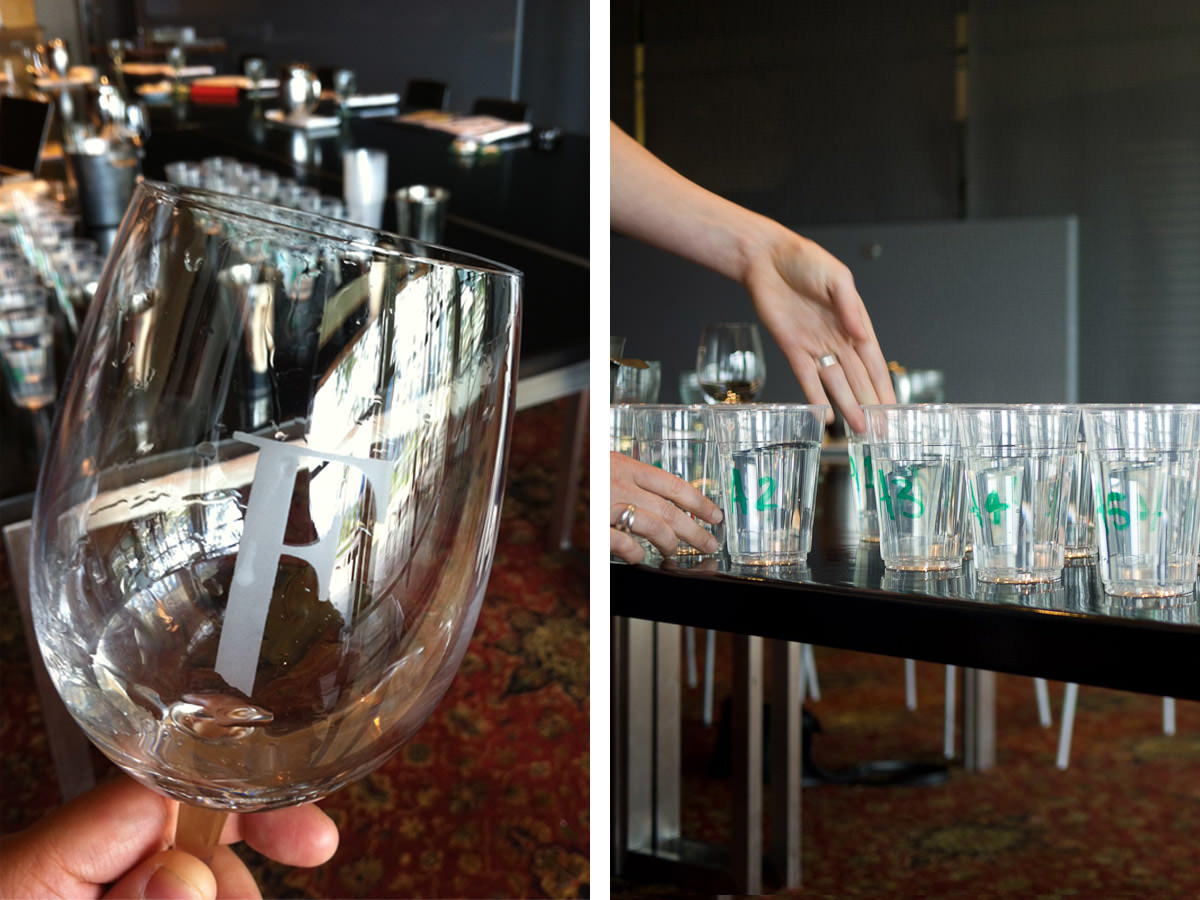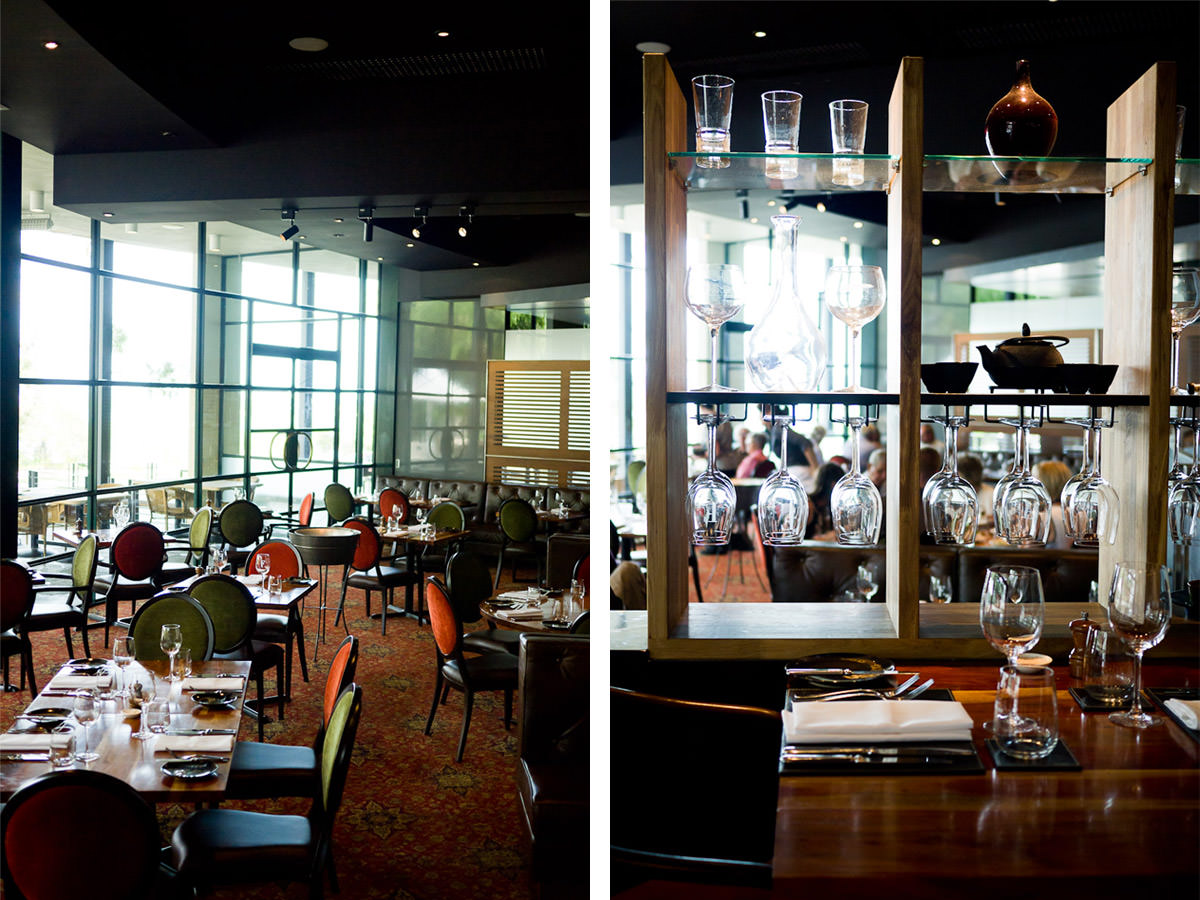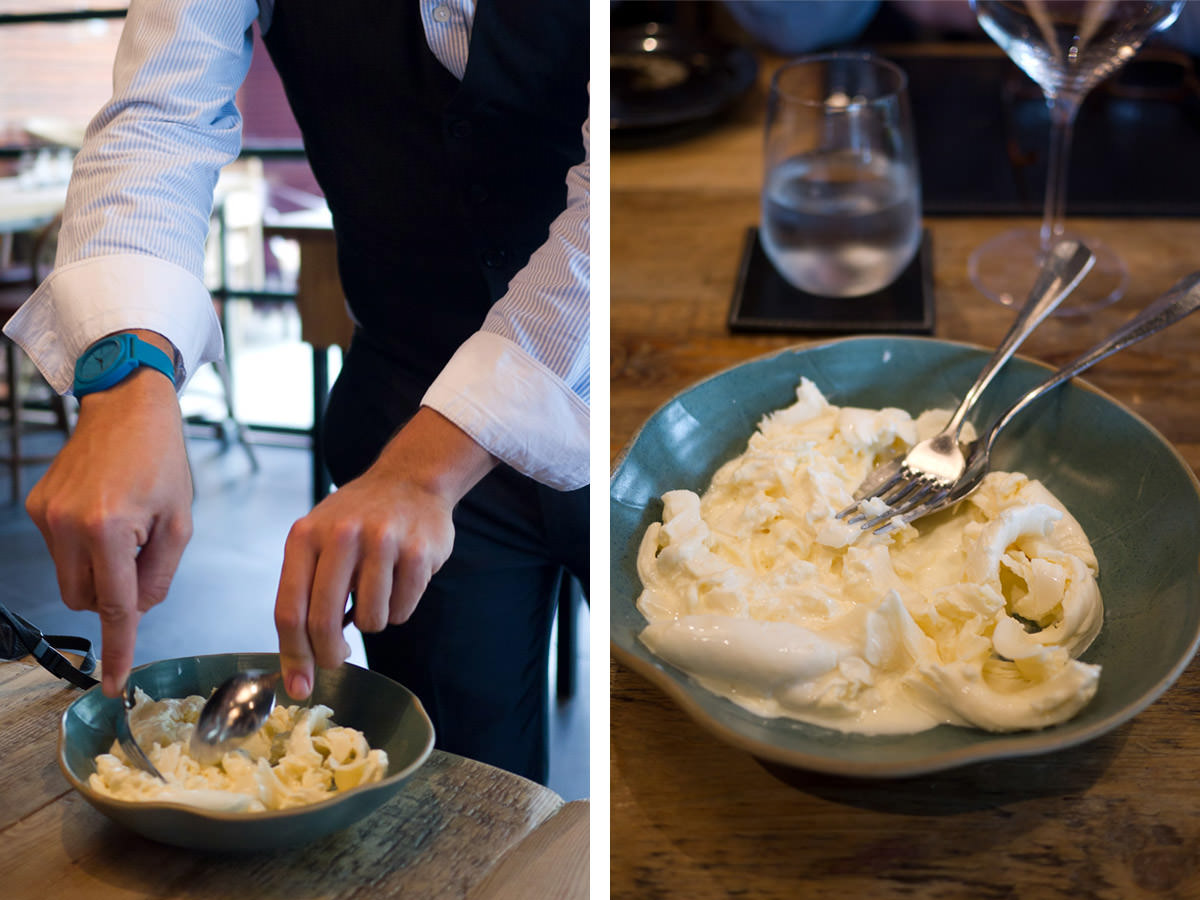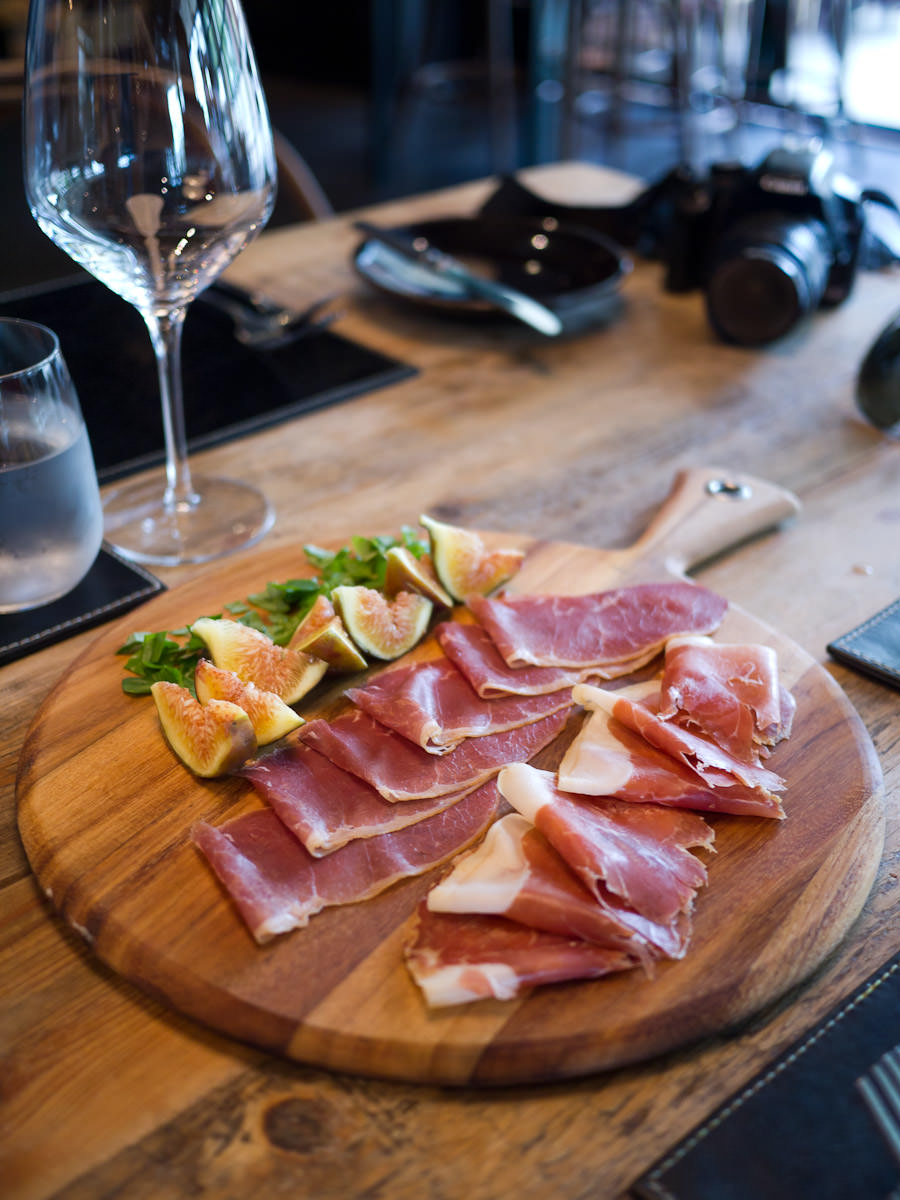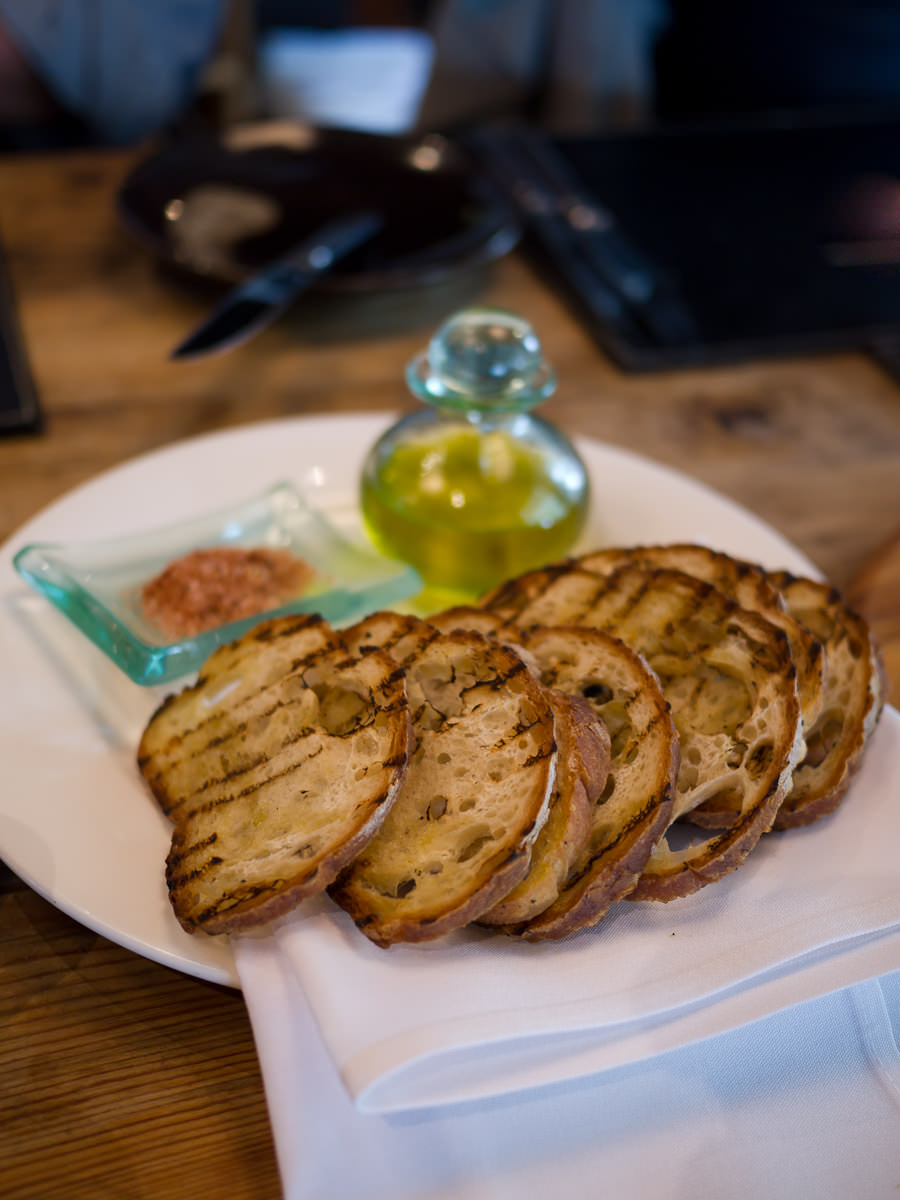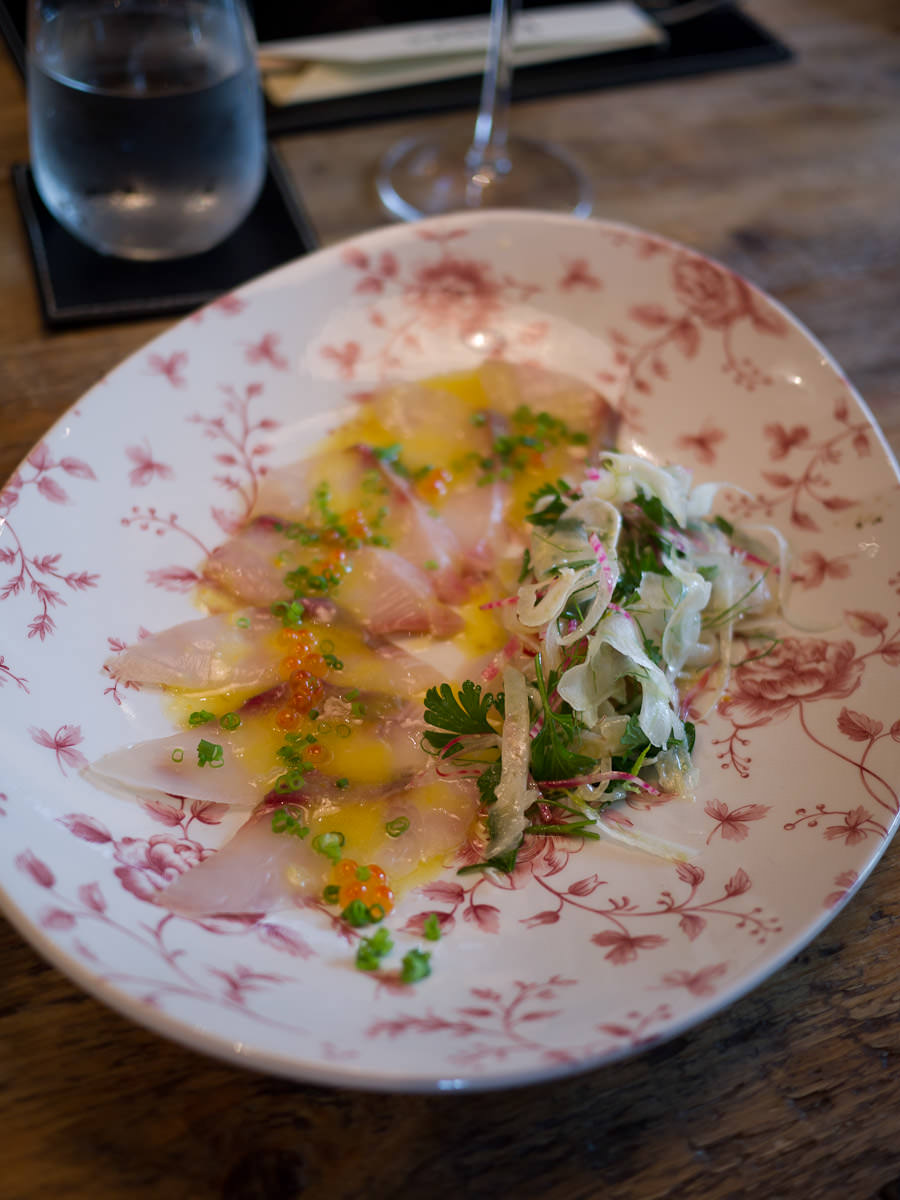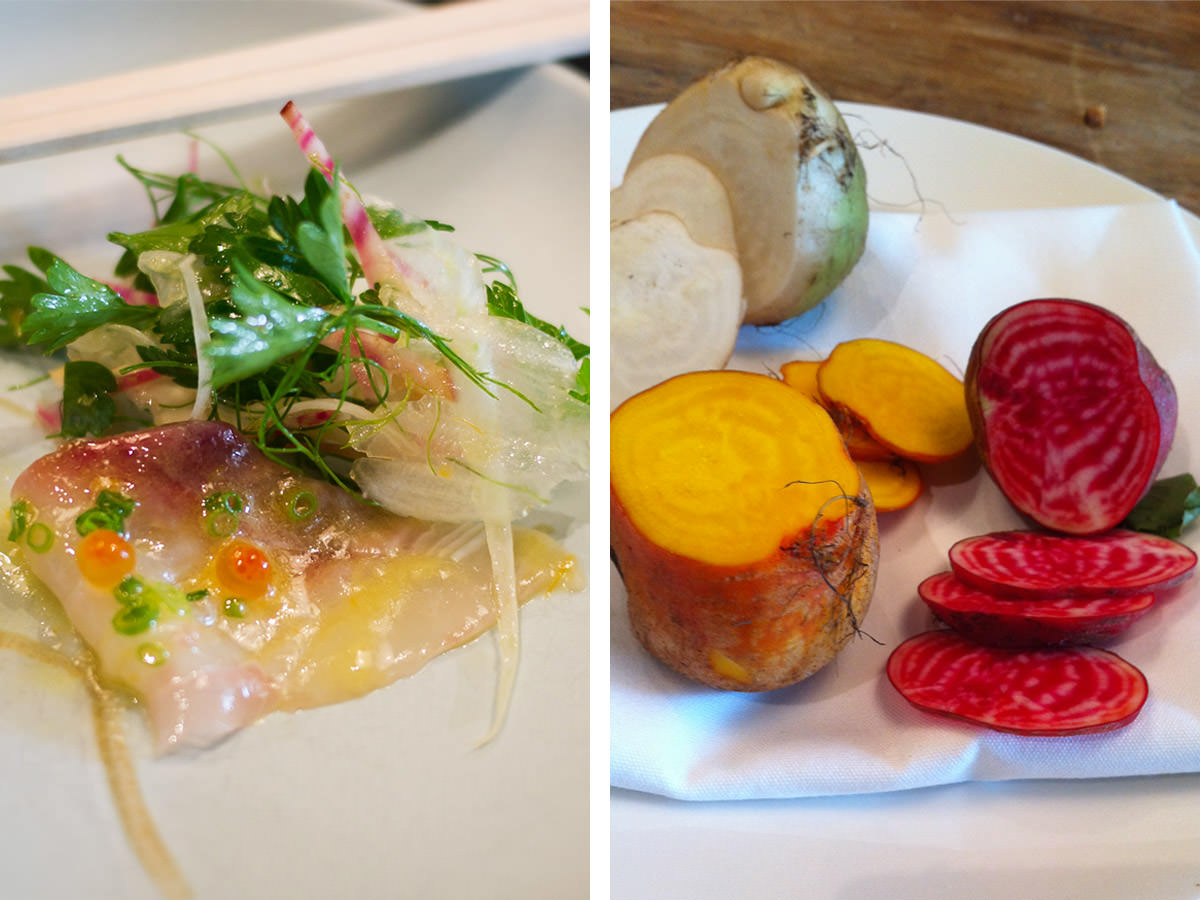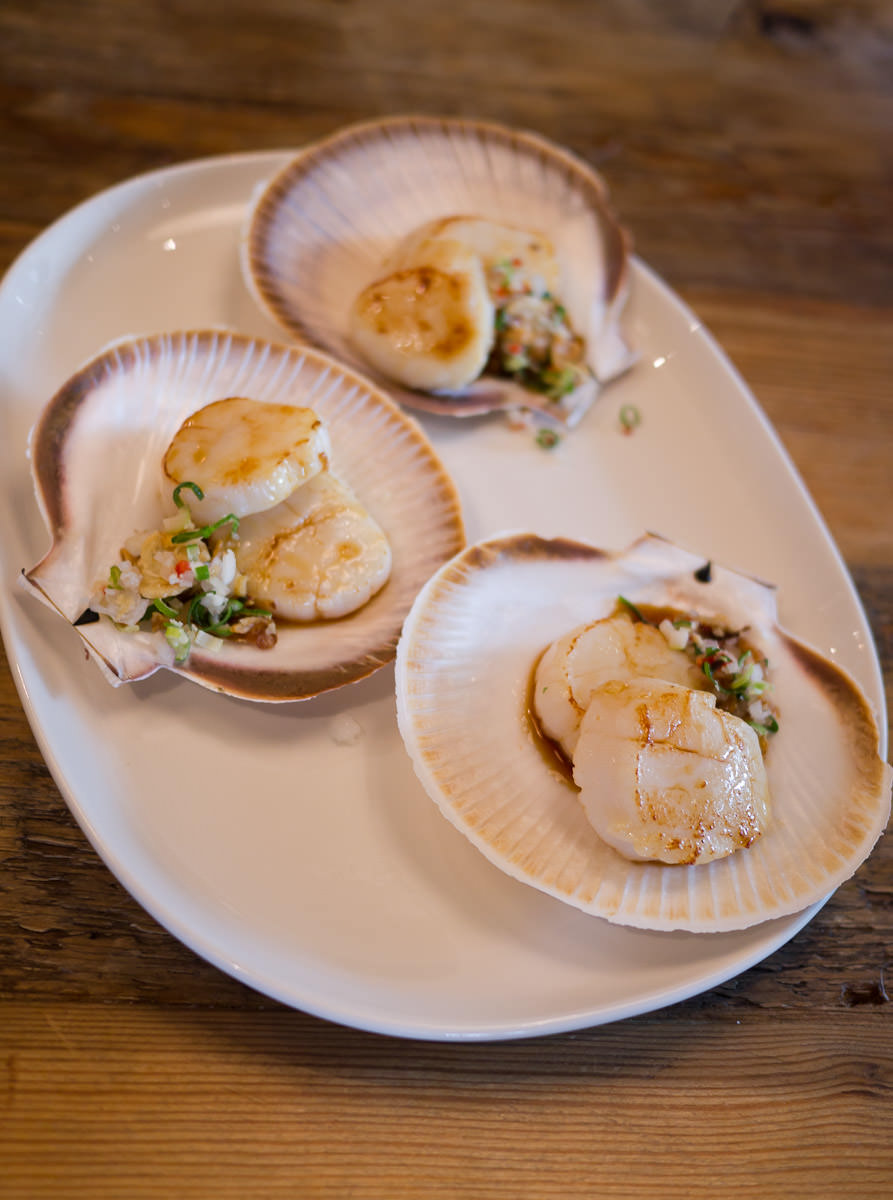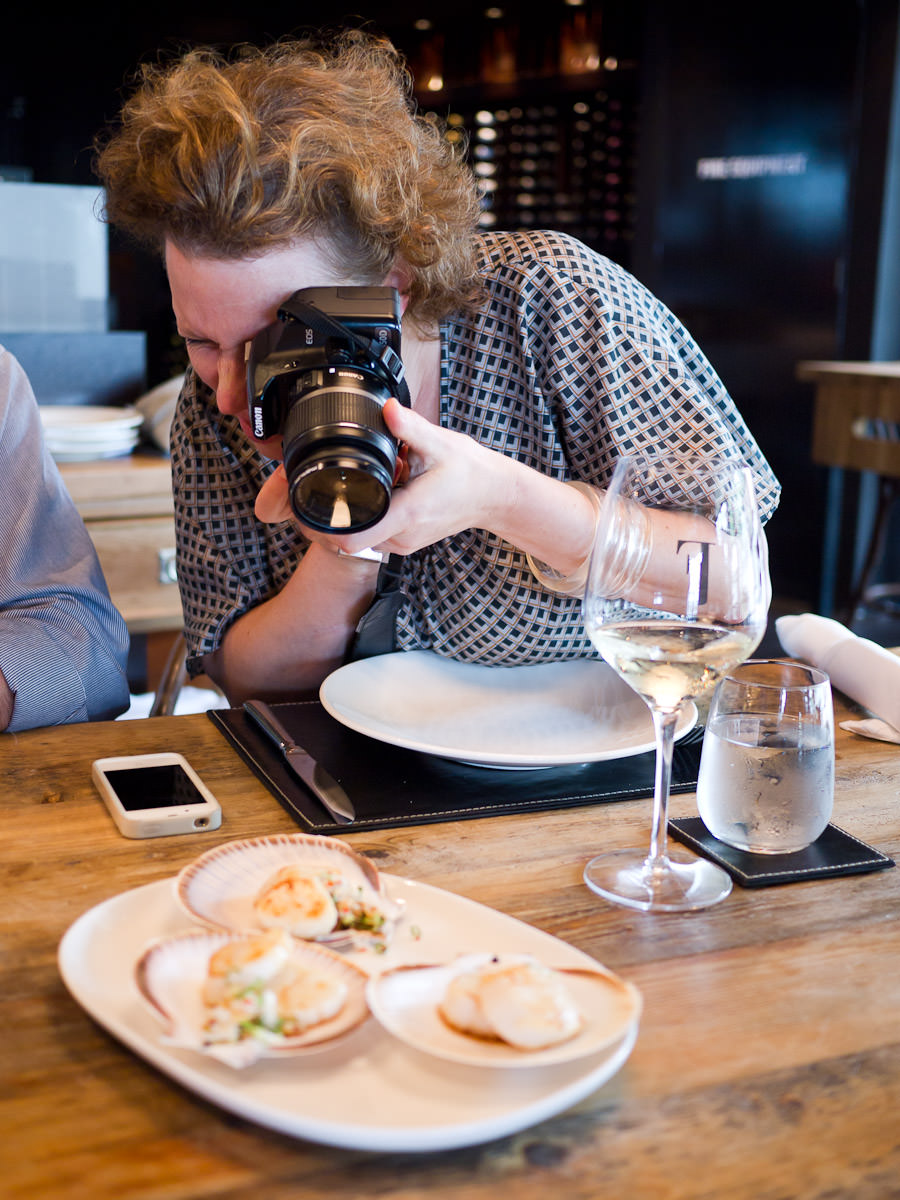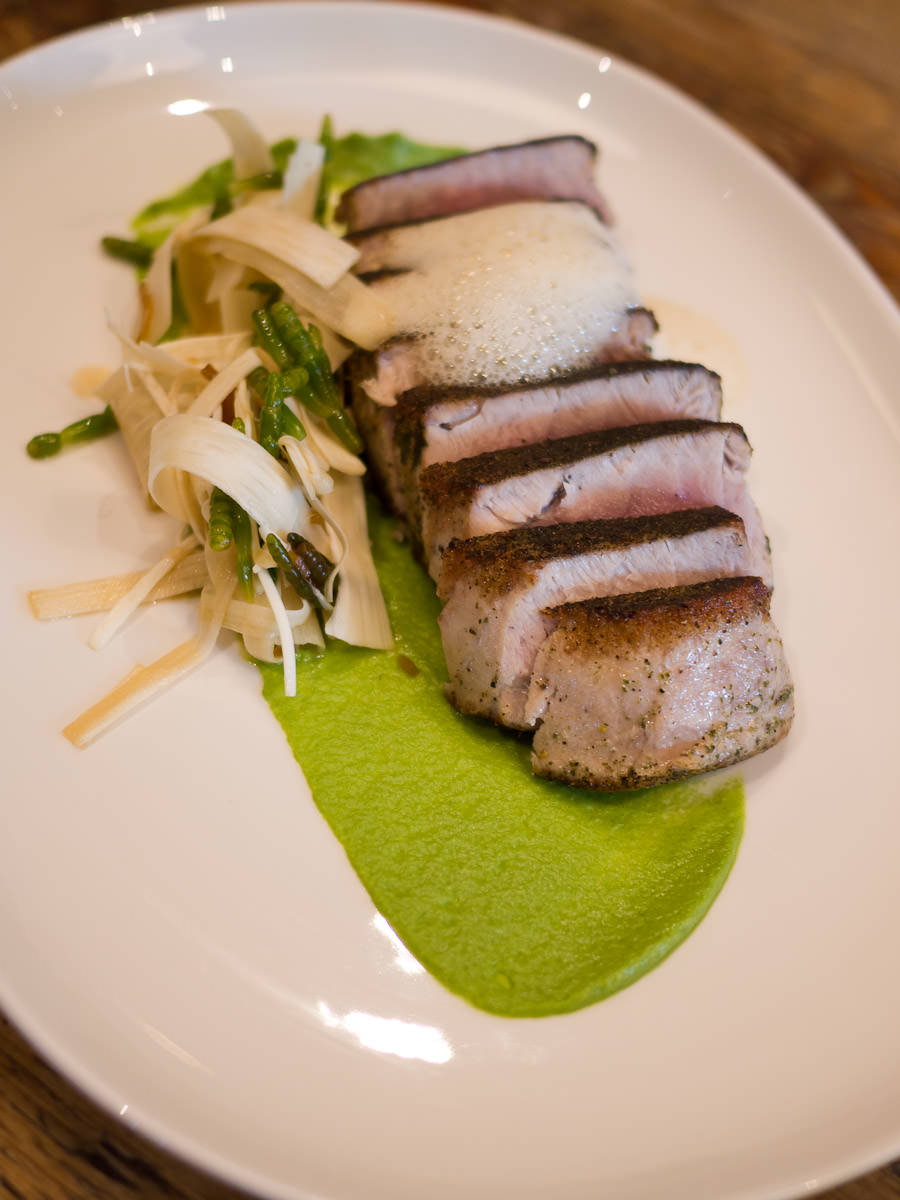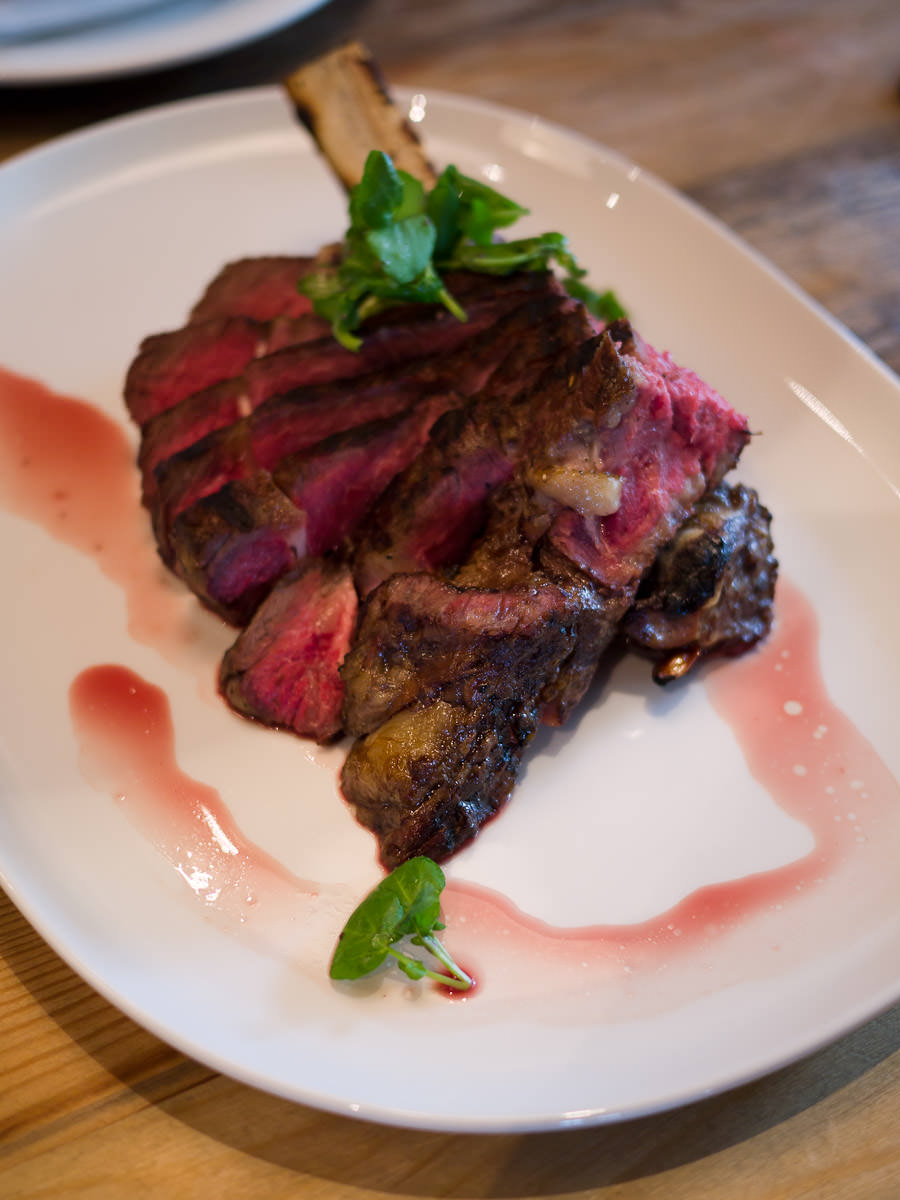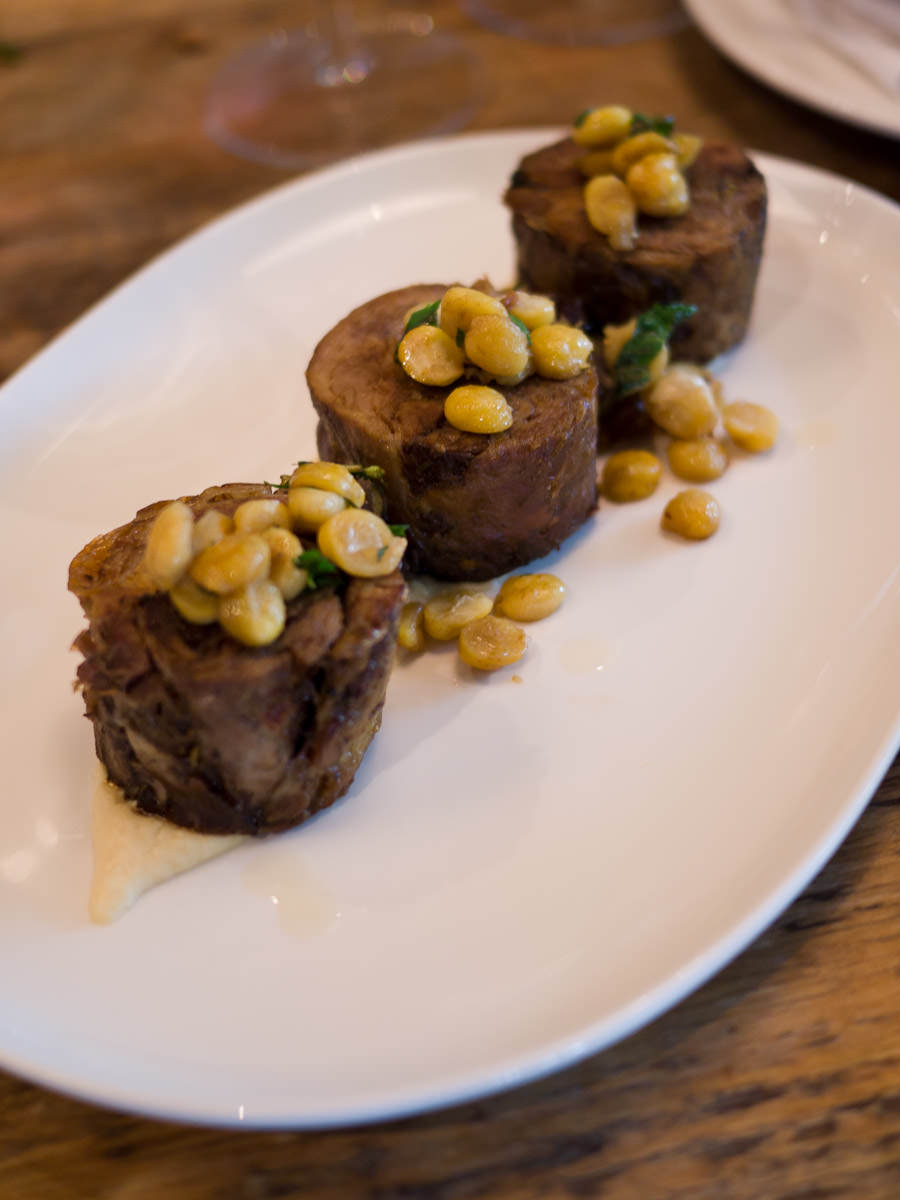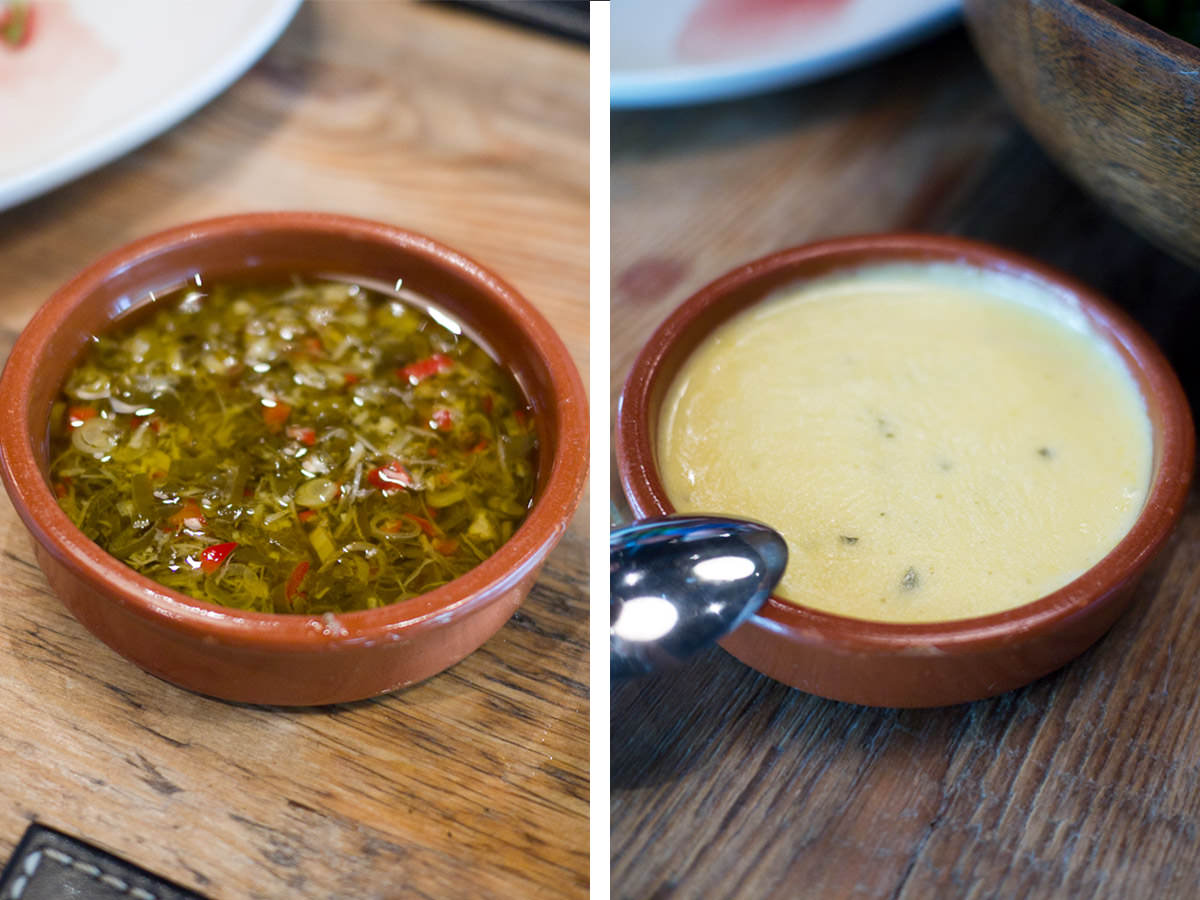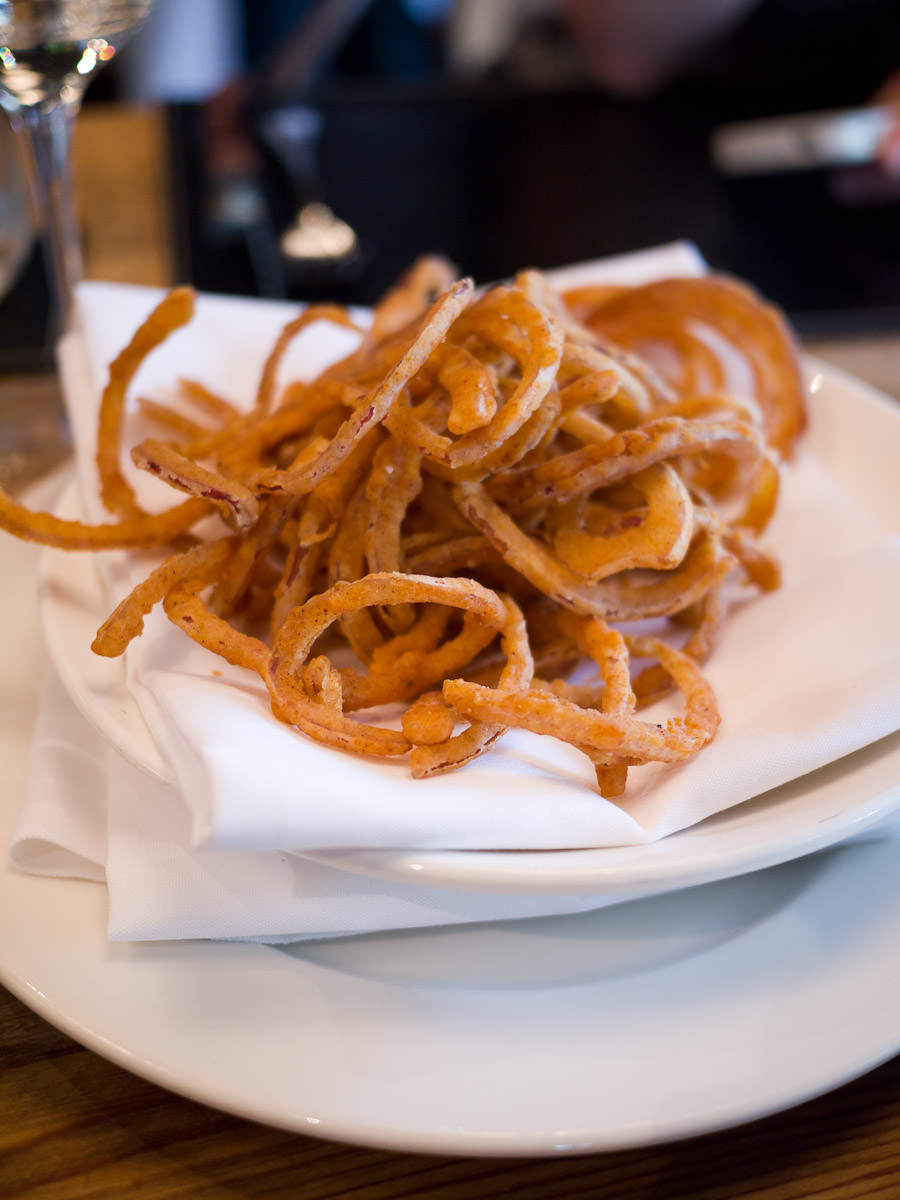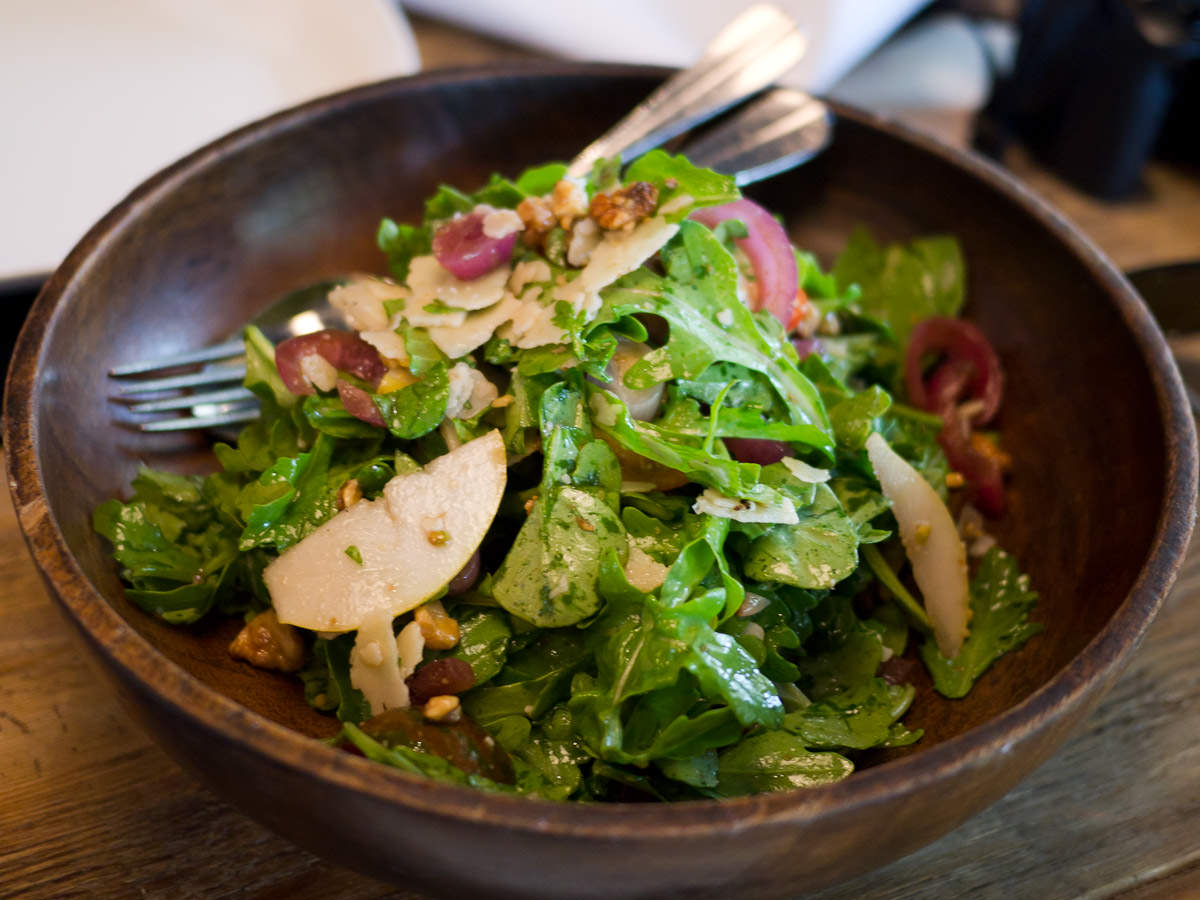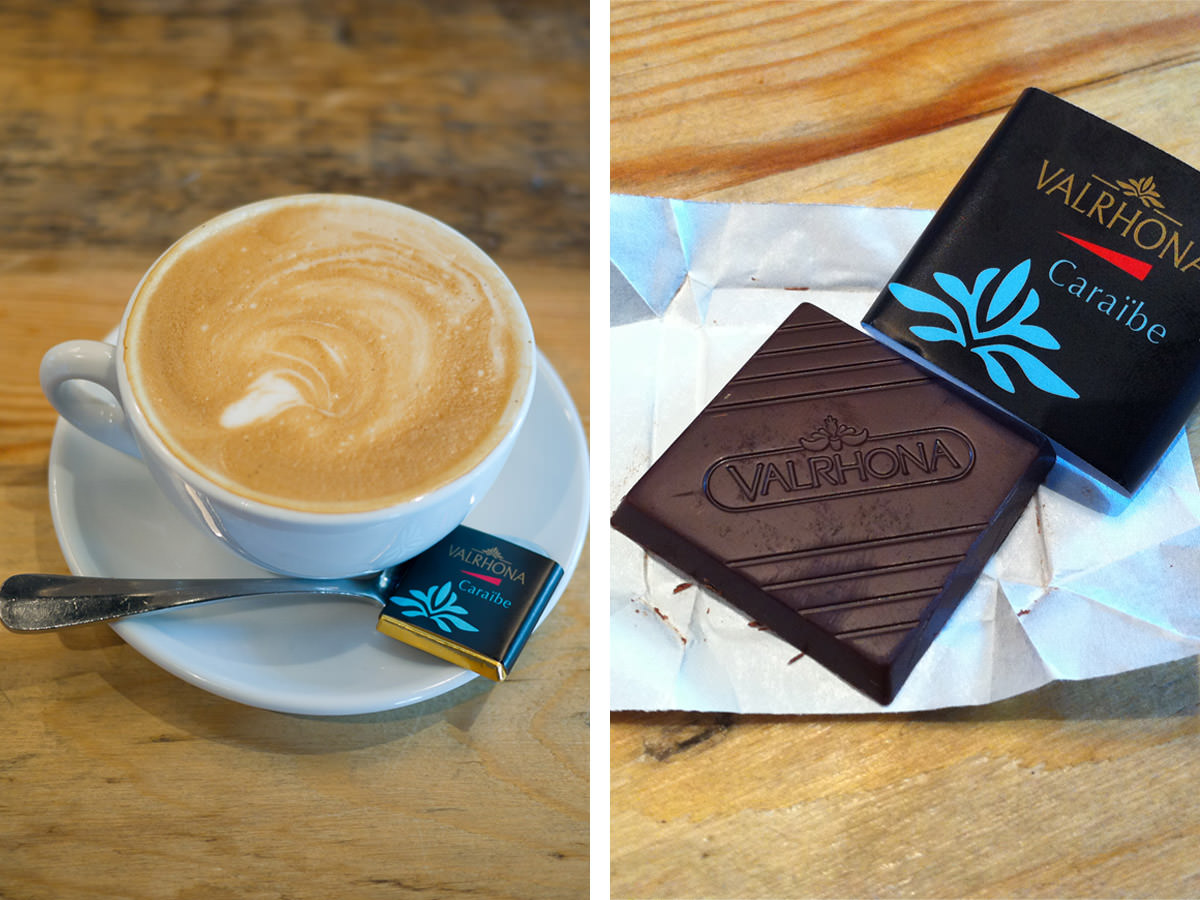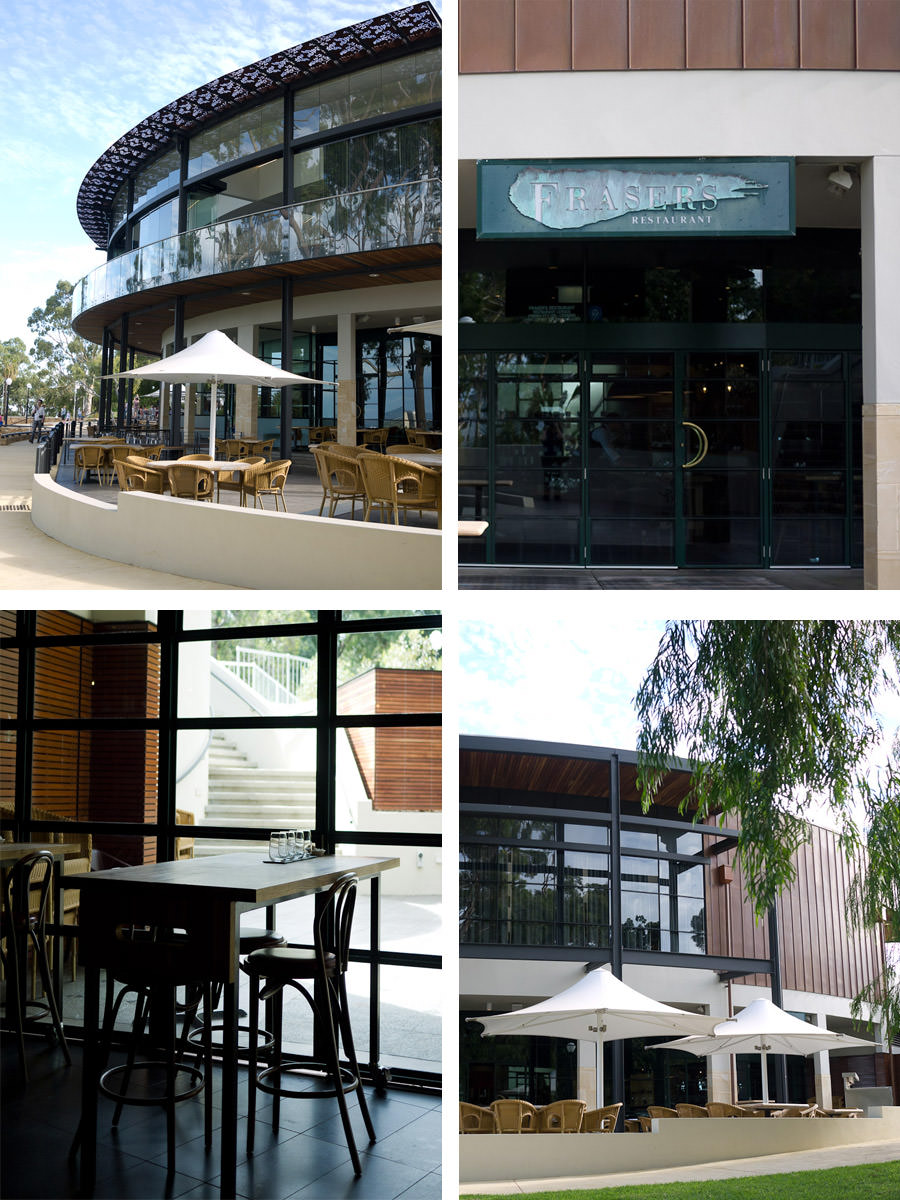Appetite for Excellence Sensory Analysis Workshop, Fraser’s Restaurant, West Perth
It’s a crisp sunny Sunday morning when Jac and I arrive at Fraser’s in Kings Park to attend an exclusive sensory analysis workshop in the restaurant’s private dining room. This event has been organised through Electrolux Appetite for Excellence, a national awards program for young hospitality professionals – chefs, waiters and restaurateurs. We’ve been invited to join a small group of top Perth chefs, all previous Appetite for Excellence finalists.
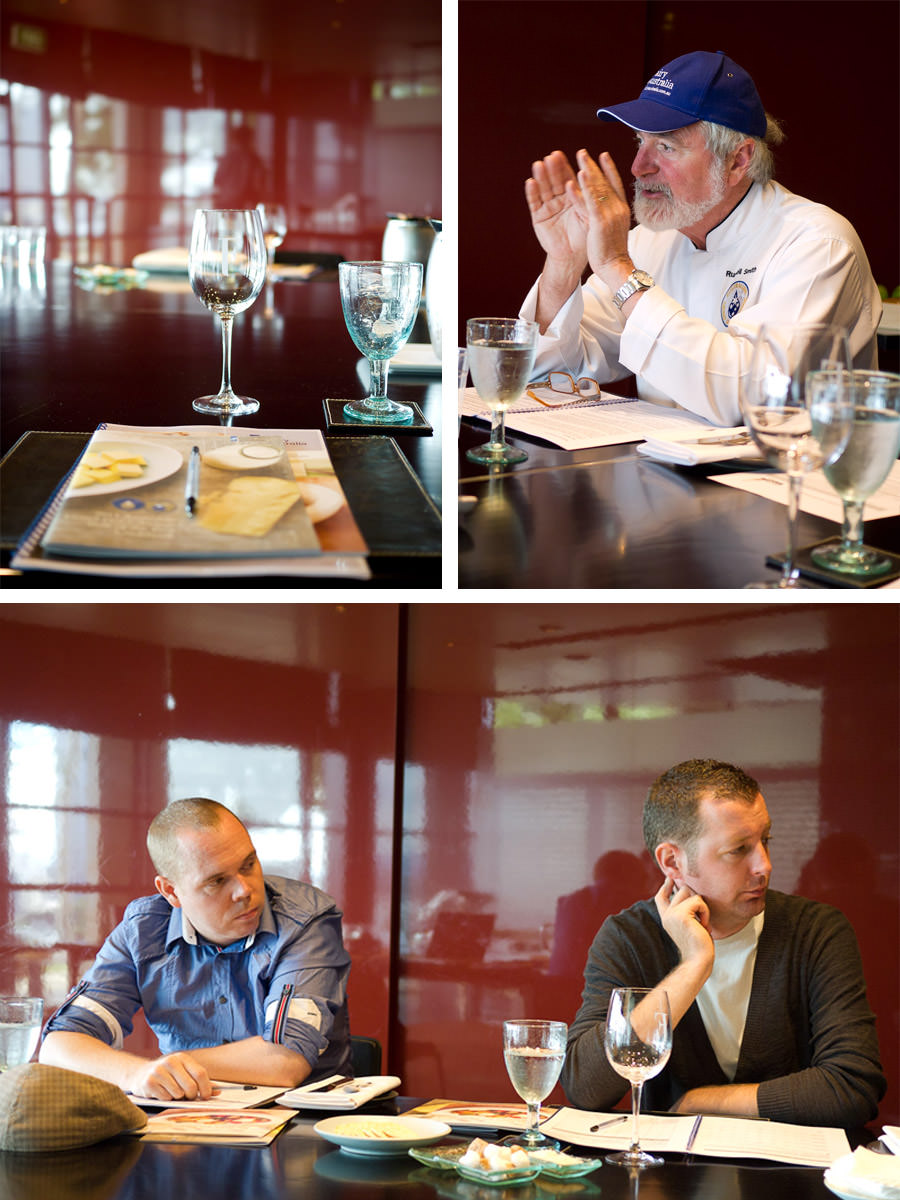
Top, L-R: workshop booklet and glasses (for taste tests and palate cleansing); Russell Smith. Bottom: Chefs Scott O’Sullivan and Adam Sayles, Red Cabbage
I feel like an impostor among esteemed company! Sitting around the table are Hadleigh Troy, chef-owner of Restaurant Amuse (2010 Young Restaurateur Finalist); Scott O’Sullivan, chef-owner of Red Cabbage Food and Wine (2011 Young Restaurateur Finalist); Adam Sayles, also of Red Cabbage (2011 Young Chef Finalist); and Suthat Sathittanakun, formerly of The Silver Spoon (2011 Young Chef Finalist).
The session is led by Russell Smith, cheese consultant and educator. He’s the deputy chief judge at the Australian Grand Diary awards and judges for the Royal Agricultural Societies and the Australian Specialist Cheese-makers’ Association Awards. Russell was the owner/operator of Mart Delicatessen in Fyshwick, Canberra for over 8 years. In addition to cheese judging, he conducts cheese education and sensory training for chefs and restaurateurs, retailers and consumers, and works with cheese-makers, including smaller, specialist and artisanal producers. He is passionate about increasing Australians’ awareness and appreciation of cheese.
The sensory workshop is just one of a number of activities organised for the award finalists, part of an ongoing education program that encourages them to develop their skills and experience.
In addition to learning about cheese, today’s workshop will use cheese to show us how and why people taste differently, help us gain a better understanding of flavour and our individual “taste profile”. Eating cheese in the name of education sounds pretty good to me!
Russell gives us a short history of cheese making, telling us that the best cheeses are produced where the milk comes from. The further the milk has to be transported, the more the fat molecules in the milk break down and change, which significantly affects the quality of the cheese that can be produced using that milk. For example, he tells us some of the most outstanding goats cheeses are made by the smaller operators – by goat farmers on their own goat farms. Most of the milk people buy at their supermarket is fine to drink, but would not make good cheese due to the distance it travels as part of the milk’s production and distribution. While the larger cheese producers standardise their milk to reduce variation in their cheese, smaller regional producers often celebrate the seasonal differences in their cheese, almost like wine vintages.
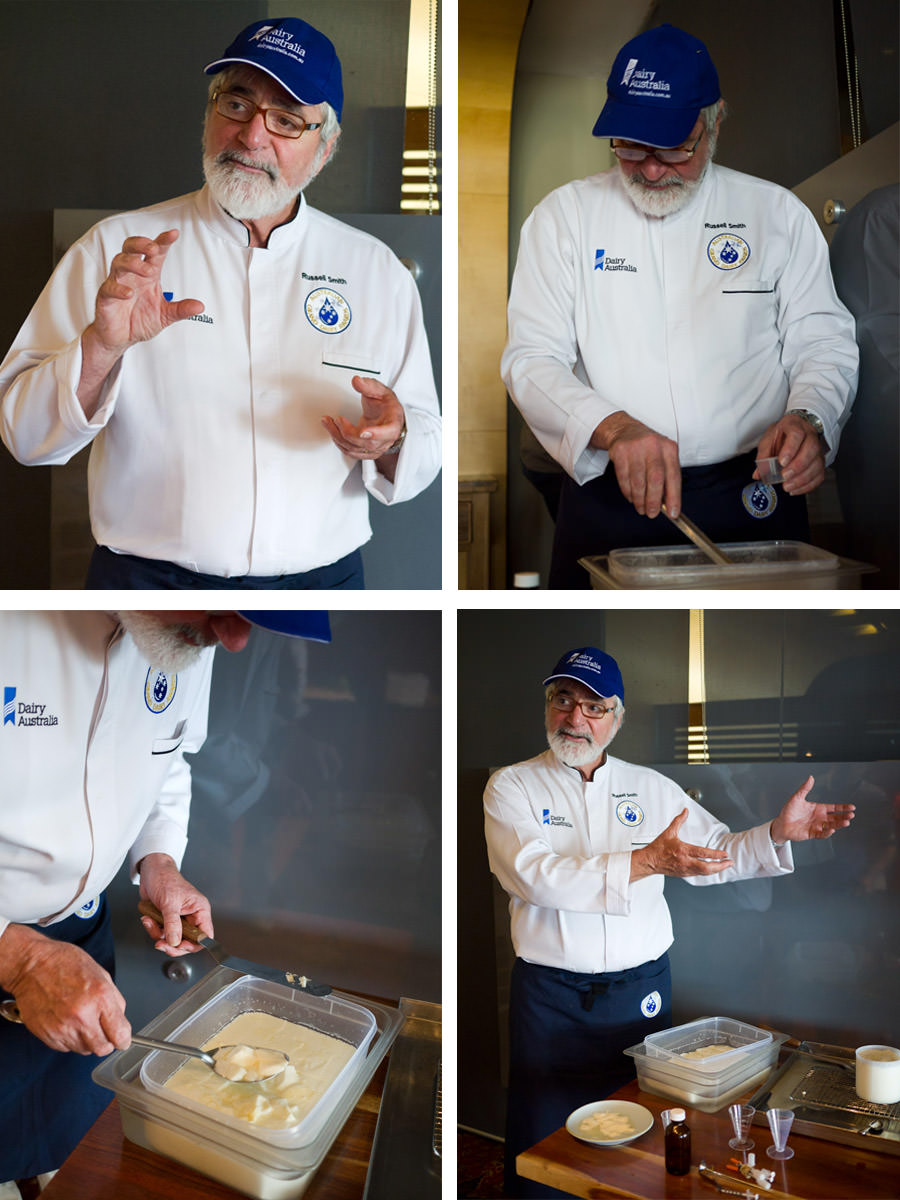
Russell Smith – cheese-making workshop.Starting top left, clockwise: Russell explaining how cheese is made; stirring the rennet into milk; discussing factors that might prevent the cheese setting properly; showing us the curds in our ‘cheese’
Russell then demonstrates the basics of cheese making, adding rennet to fresh full cream milk. Rennet is an extract from the fourth stomach of young cows, goats and sheep, which is used in cheese making. I remember learning about rennet for the first time back in high school home economics – do you remember when you first learned about rennet? Did it gross you out temporarily (until you thought about how delicious cheese is)? Rennet contains certain enzymes which help the young animals digest their mothers’ milk. When added to milk as part of the cheese making process, rennet causes the milk to coagulate, forming what we know as curds and whey. When we check on our rennet-added milk towards the end of the session, the curds that have formed resemble very soft silken tofu. The chefs and I can’t resist having a taste (Jac isn’t so keen) – it’s a very mild flavour, like cream.
Russell gives us some insights into the challenges and process of cheese judging. We discuss the flavour of cheese and the importance of smell, texture and mouthfeel in the eating experience. Psychological and physiological factors can impact on our taste perceptions. These must all be taken into consideration when evaluating any food, not just cheese. We then test our ability to detect and identify a taste. The lowest concentration that you can detect a flavour is known as your “threshold”.
We taste water samples to which a mystery ingredient has been added in increasing amounts. We are asked to identify the point at which we can detect a difference in taste. It’s a lot harder than it looks, though perhaps pressure of wanting to perform respectably in the presence of others and a professional taster/food judge are making it even harder! I’m interested to discover that my threshold for salt detection is much higher than any of the others doing the threshold tests with me. A person’s cultural background can have a bearing on their taste profile, and let’s face it – soy sauce, oyster sauce and other salty ingredients have played major roles in my life since childhood and I like food saltier than Jac does.
We also do a couple of triangle tests, where we’re blindfolded and provided three cheese samples. Two are identical and one is different. Using taste (we’re also allowed to smell the samples), we have to identify the cheese that is different. Again, it’s easy to over-think it.
These sorts of tests are used in taste training for trainee food judges. Cheese judges also have a vocabulary to learn to ensure they can judge and describe cheeses effectively and consistently – both for positive points and defects.
Russell has selected a range of Australian cheeses for us to taste, covering the main cheese classes, including white mould, blue mould, semi hard and eye cheese and hard cheese. We compare two different Camembert cheeses and two blue vein cheeses, discussing what we like/dislike about each one and why.
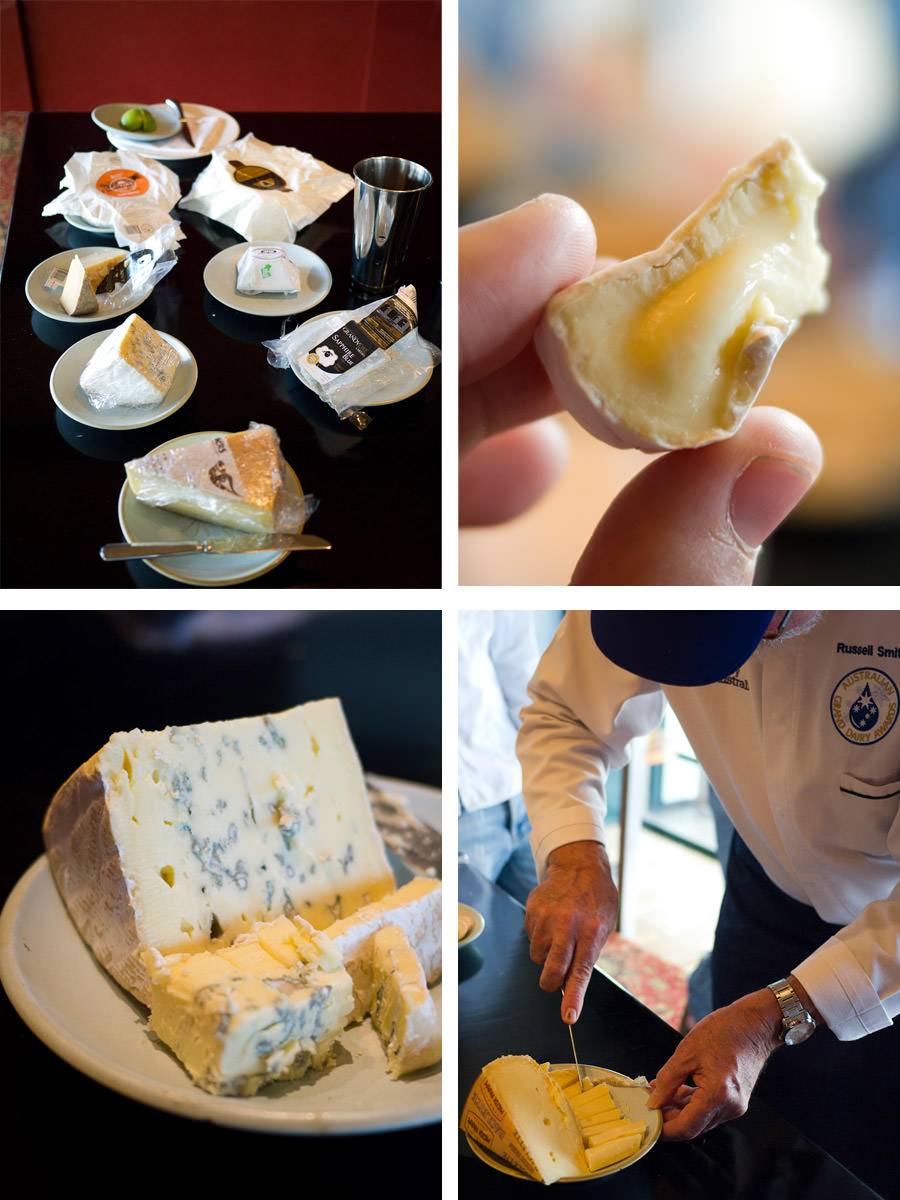
Cheese tasting – starting at top left, clockwise: cheeses left to get to room temperature; Divine Dairy French Style Camembert (SA); Russell slicing up the Heidi Farm Raclette; Tasmanian Heritage Blue Opal Brie
My favourite cheeses are the Tasmanian Heidi Farm Raclette and the Tasmanian Heritage Blue Opal Brie, a creamy blue vein Brie with a soft buttery texture that’s milder in aroma and flavour than other blue vein cheeses – what Russell calls a “beginner’s blue”. But it’s not just for beginners – even Jac, who loves the stinkiest of stinky cheeses, really enjoys the Blue Opal Brie.
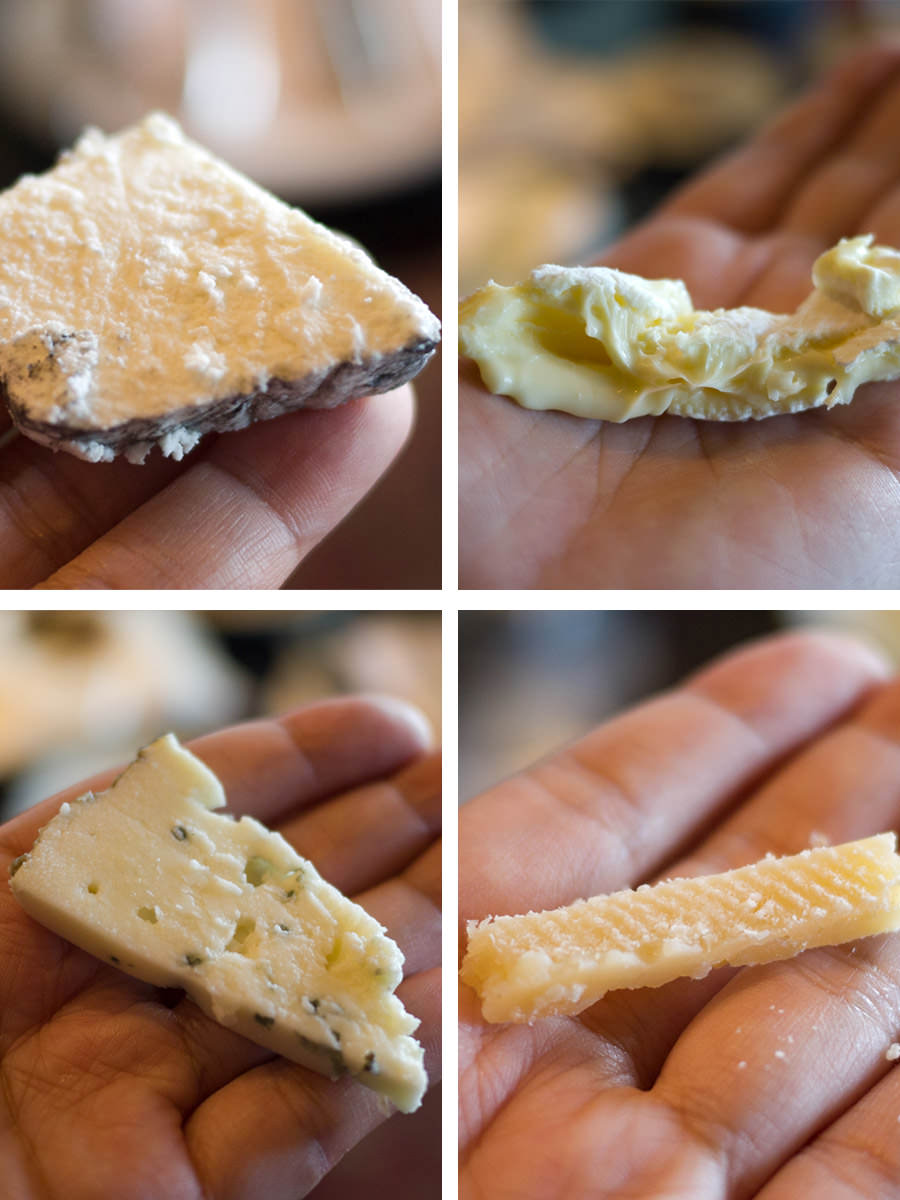
Cheese tasting – starting at top left, clockwise: Ringwould Ashed Fresh Goats Cheese (WA); Tasmanian Heritage Signature Camembert; Grandvewe Sheep Milk Pecorino (TAS); Grandvewe Sapphire Blue Sheep Milk Cheese (TAS)
We’ve had the cheeseboard, but now it’s time to head into the restaurant dining room for some lunch. We’re in elegant surroundings but our lunch will be informal, featuring simple yet sophisticated dishes designed to be shared, some not on the restaurant’s regular menu, but all showcasing Western Australian produce.
First, more cheese! Burrata, a creamy fresh mozzarella which arrives looking like a plump moneybag but is deftly broken down and pulled apart by our waiter with a fork and spoon.
To go with the cheese, fresh figs, bresaola (air-dried beef) and prosciutto, beautifully presented.
There is also warm crispy toasted ciabatta, served with Margaret River olive oil and chilli salt. With the chewy stretchy cheese, figs and meats, it’s a gorgeous combination of flavours and textures.
Next, a ceviche of hiramasa kingfish with a salad of fennel and striped beetroot – fine, delicate and pretty.
A couple of us are fascinated by the striped beetroot, having not come across it before. I find it has a milder flavour to red beetroot (tastes less strongly of dirt). Chef kindly sends out a dish of raw beetroot for us to scrutinise: candy striped, golden and white beetroot. Jac even has a nibble. It’s an interactive bonus lesson in beetroot.
The next course is scallops with yuzu, lime, soy and palm sugar. They’re cooked beautifully, sweet and tender.
Next, a show-stopping seared tuna with sea urchin foam, served on an edamame and horseradish sauce with salad of hearts of palm and samphire.
Those were merely the starters! It’s not long before the main course – meats and accompaniments are delivered all at once to our table.
Rib eye of Margaret River beef, charred on the outside and cooked rare.
Slow-cooked lamb shoulder, looking like tree stumps on the plate, tumbled with chick peas. The lamb is so soft it literally falls apart when I touch it with my fork.
To go with the meats, chimmichurri and bearnaise sauces. Jugs of meat jus are also placed on the table.
The crispy red onions are unbelievably moreish. The plate is right in front of me and I can’t stop eating them.
The roasted potatoes are sprinkled with salt, crisp on the edges and fluffy on the inside.
Last of all, a big salad featuring green leaves, onions, shaved parmesan, sliced pear and candied nuts. The salad on its own would make a tasty lunch (well, I’d add bacon lardons).
It’s a magnificent feast.
As we eat, I ask Russell if he ever gets sick of eating cheese. He grins as he tells me although he may not eat cheese the day immediately after judging a cheese show, he never gets tired of cheese. Now here’s a man living his dream!
Around the table, we talk about a range of food-related topics (what else do you expect when chefs, a food blogger, her food-loving partner and a cheese expert get together?), including foraging for wild produce around Perth, why it’s so hard to get and keep good front of house staff, the cheeses the chefs serve up at their restaurants, and our dream country to visit for a produce tour (Italy, South Africa, South America, Vietnam, France…).
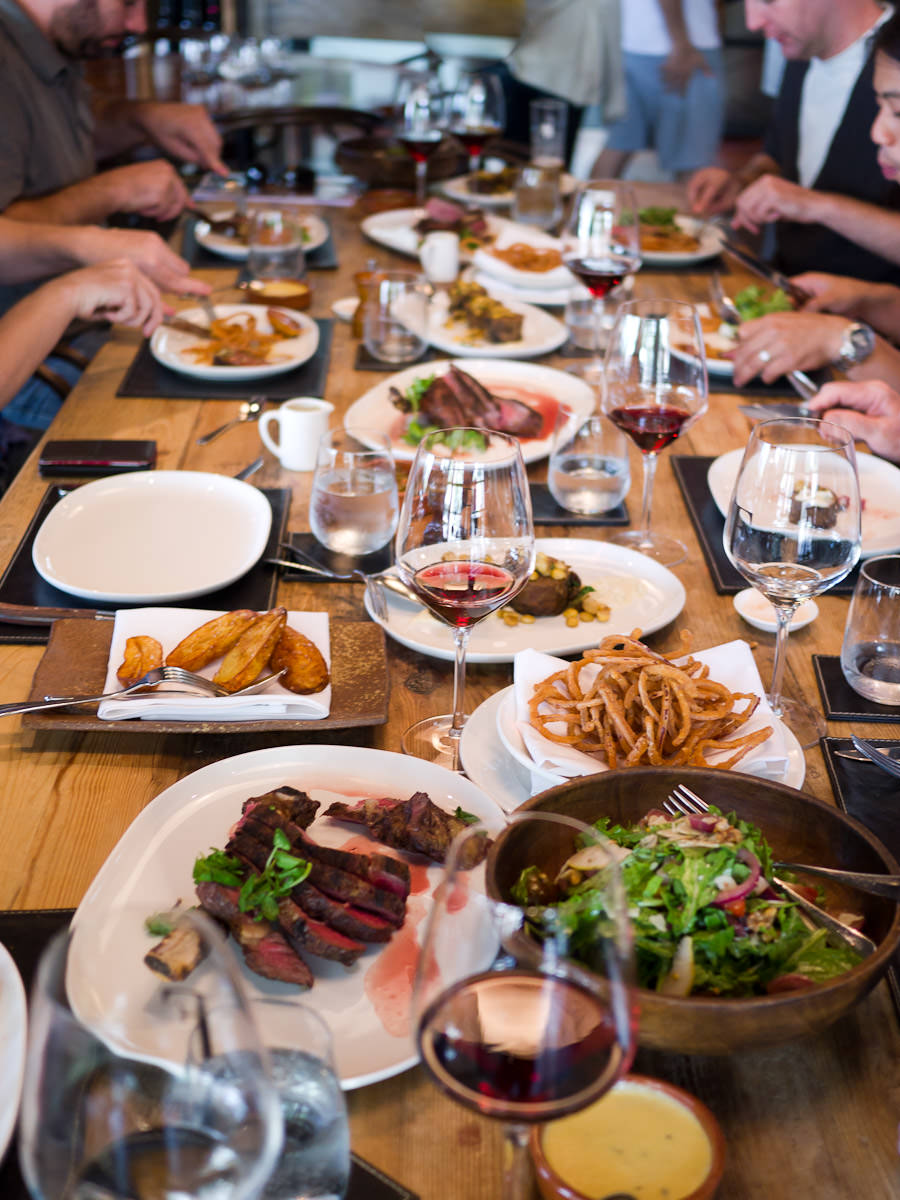
Feasting! Although, as usual, while everyone has started, my plate is empty while I’m busy taking photos
After all that food, no one feels game to take on dessert, but coffee and Valrhona dark chocolate squares finish off the meal nicely.
It’s been a wonderful morning and an amazing lunch. Thanks to Electrolux Young Chef Judge Fraser’s chef Chris Taylor and all the team for a superb meal and service. Jac and I found the sensory analysis workshop enlightening and a lot of fun. And it’s always fantastic to have an excuse to eat cheese.
Fraser’s Restaurant
King’s Park
Fraser Avenue, West Perth WA 6005
Open 7 days
Lunch and dinner 12pm – late
Electrolux Appetite for Excellence
National awards program for young hospitality professionals – chefs, waiters and restaurateurs. Applications for 2012 close on 15 April. Interested?
Russell Smith
Cheese Consultant and Educator
Deputy Chief Judge, Australian Grand Dairy Awards
TFP and Jac attended the Sensory Analysis Workshop and dined at Fraser’s Restaurant courtesy of Electrolux Appetite for Excellence.
Note: Jac and I have dined at the restaurants of the chefs who attended the workshop (links in the post where the chefs are named). The only reason I haven’t featured a post on Red Cabbage is because it’s extremely dark at dinner time and the photographs I took weren’t good enough to feature on the blog. The service was excellent and highlights of the meal were the pork belly and dessert tasting plate.
